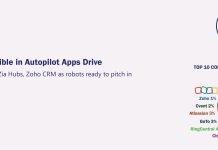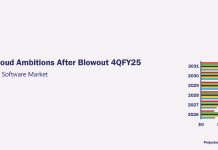Salesforce.com said it named Keith Block, formerly executive vice president of Oracle, as its new president and vice chairman, following a series of new hires from its archrival.
The appointment of Block came two days after Salesforce.com announced the purchase of ExactTarget for $2.5 billion, a move that underscores its desire to dominate the CRM marketing automation segment in its long-running battle with Oracle, which earlier this year bought Eloqua, a close competitor of ExactTarget.
Block was instrumental in helping Oracle grow its North American software sales and consulting operations to a 11,000-person organization with solid results through the years.
Block ended his 26-year tenure at Oracle in June 2012, shortly after the crucial fourth quarter of fiscal 2012 in an abrupt departure that apparently rattled Oracle so much that it had to move up its earnings announcement before its scheduled date.
Prior to his departure, Block was quoted in a court document criticizing Oracle’s purchase of Sun Microsystems. His comments were made public stemming from a lawsuit filed by HP against Oracle for its decision not to offer software support to customers of HP servers using Itanium chip. Block’s statements were at odds with Oracle’s corporate line of leveraging the Sun assets to their fullest extent.
The hiring of Block follows a string of departures of high-level Oracle sales executives, some of whom have joined Salesforce.com.
In February 2013 Kevin Paschuck joined Salesforce.com as Senior Vice President, Public Sector, a strategic vertical that the CRM apps vendor is eager to exploit. Paschuck spent more than a year at Oracle as he stayed on following Oracle’s 2012 acquisition of RightNow where he led its government sales operations in the preceding five years.
Last month, Ann Marie Isleib joined Salesforce.com as Regional Vice President of Sales, following more than 10 years in various sales positions at Oracle.
In March 2013 Microsoft hired Judson Althoff, a well-regarded channel veteran who spent 11 years strengthening Oracle’s ecosystem. Althoff is now Microsoft’s president of North America responsible for sales, marketing and services in the United States and Canada.
During its third-quarter fiscal 2013 earnings call in March, Oracle co-president Mark Hurd said Oracle had added more than 4,000 people to its sales force since late 2011. One of the biggest beneficiaries of the field expansion is Oracle Direct, an inside sales organization that has grown its headcount drastically over the past year staffing up with new recruits in Dublin, Ireland; Dubai, UAE; Malaga, Spain; as well as North American facilities in Austin, TX; Broomfield, CO; Burlington, MA; Minneapolis; Mississauga, Canada; Reston, VA; and its San Francisco Bay Area main offices.
Based on public documents, Oracle sources, channel partners and comparable data from other vendors, Apps Run The World estimates that Oracle’s sales engine remains formidable with one of the largest direct-selling operations in the software industry with more than 22,000 sales representatives and executives currently, up from 18,000 at the end of its fiscal 2012.






